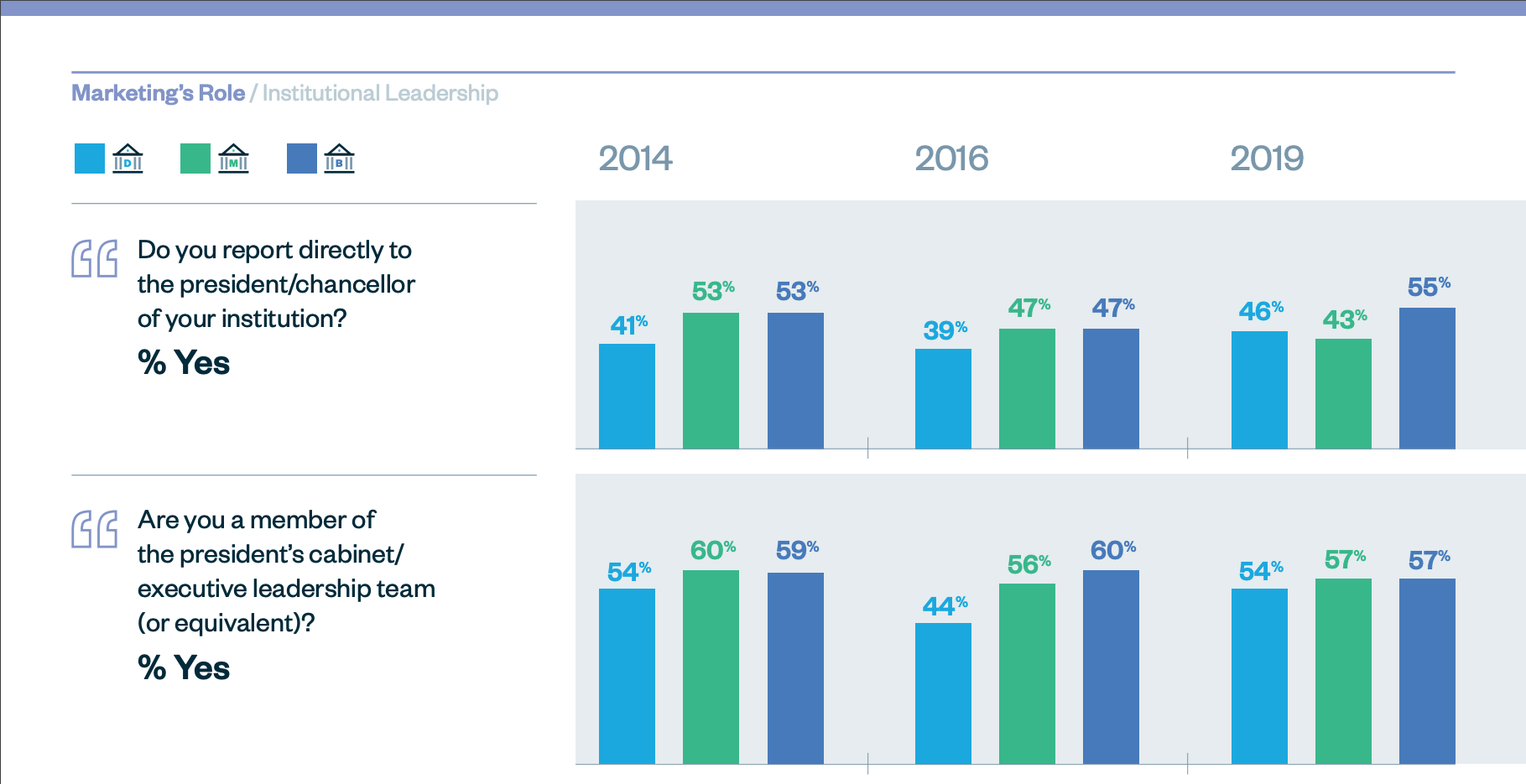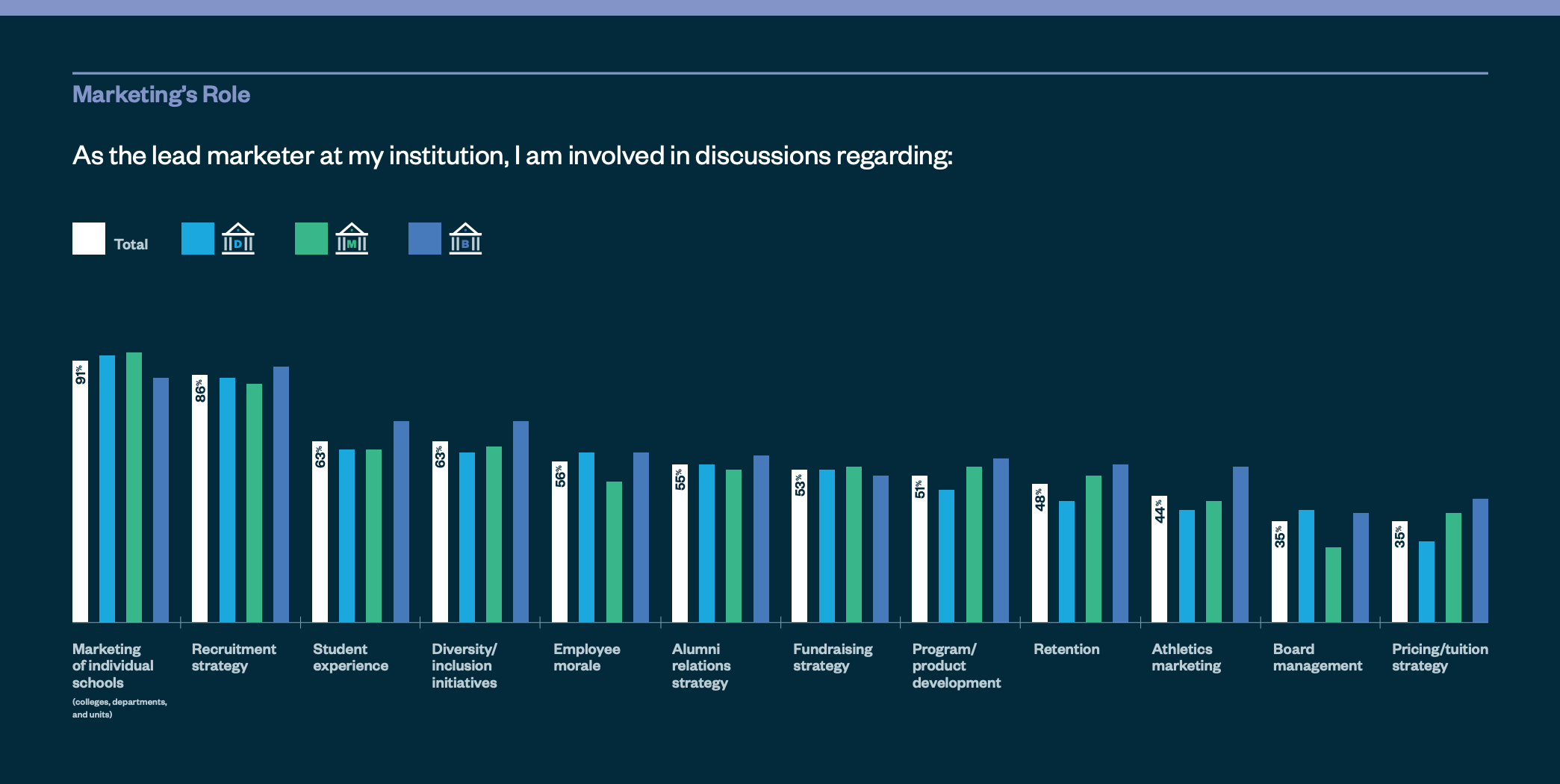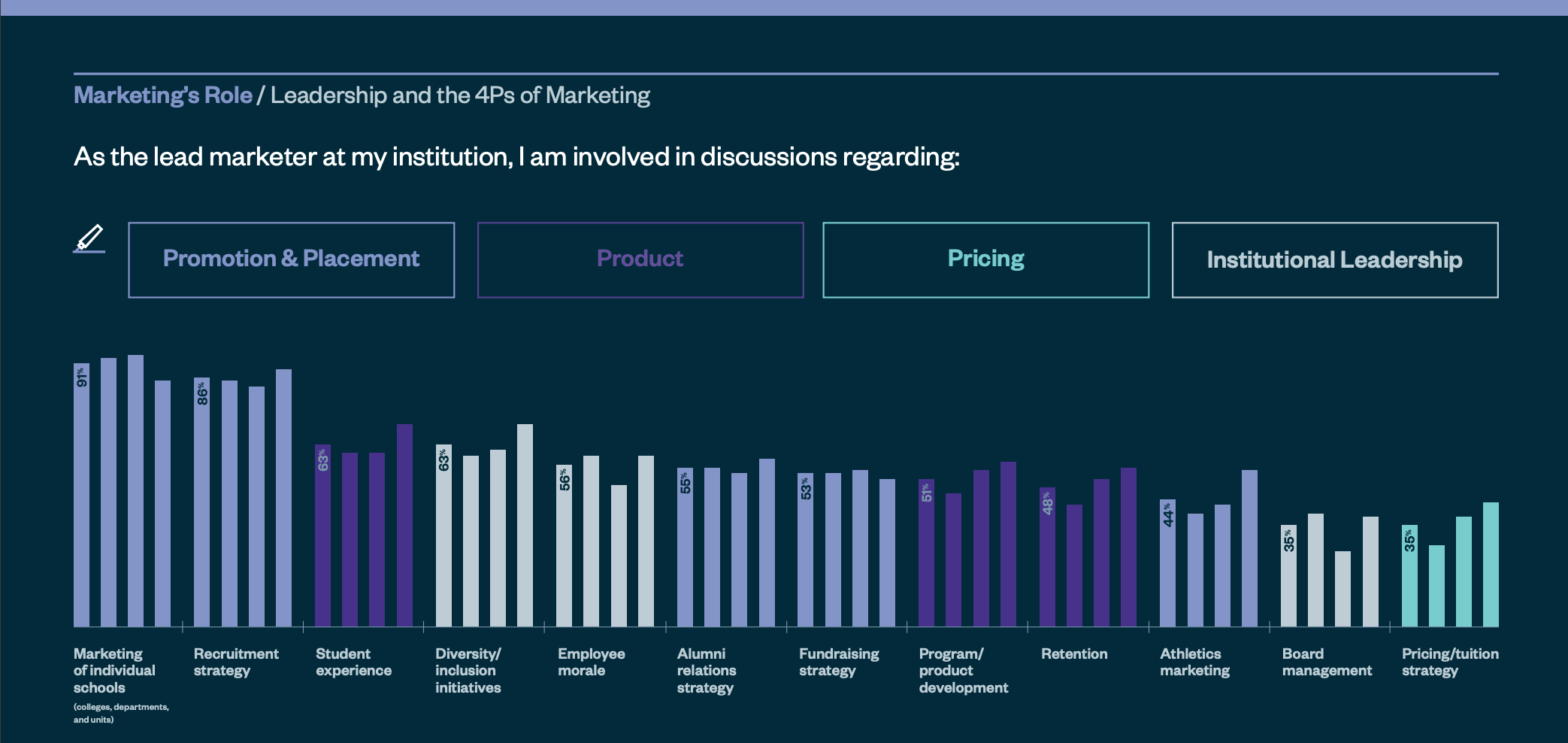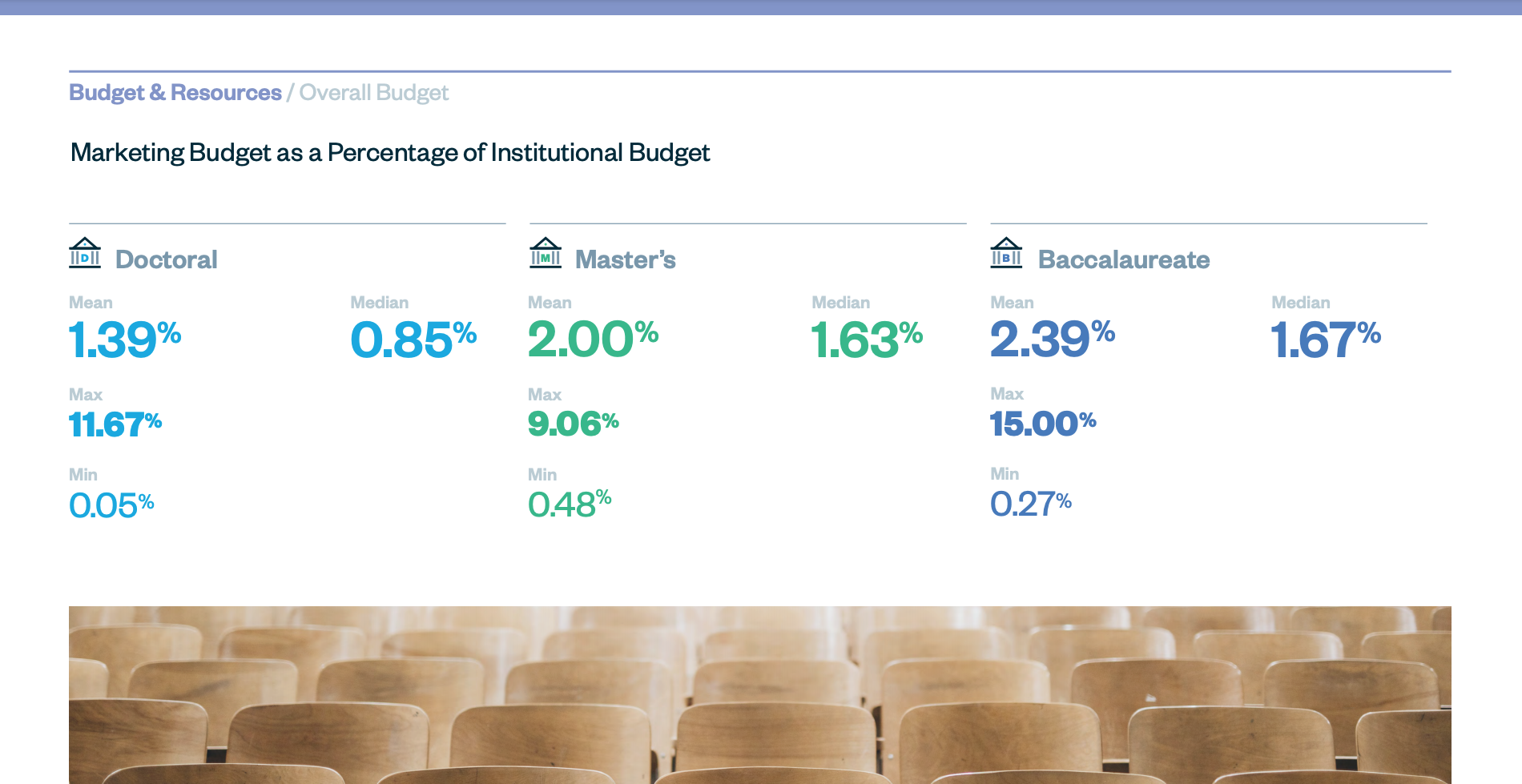Editor's Note: Our ongoing series about the Future of Higher Ed MarComm is focused on all of the topics that we believed were important pre-pandemic, but in a world permanently transformed by covid, have evolved to imperatives.
Few topics are more important to us as an agency than empowering the leaders of our industry with the most insightful, relevant, and actionable data. That's why we're in the field again for our 2021-22 Higher Education CMO Study — and it's why we've made some substantive changes to how that data will be made available to those who participate in our study.
SimpsonScarborough launched the first Higher Education CMO Study in 2014 to provide higher education marketers with essential benchmarking data on staff size and marketing budgets. Prior to the release of that study, higher education marketers had no way of knowing if their team or budget was larger, smaller, or on a par with peer institutions. Of course, it's evolved since then. We replicated our study first in 2016 before expanding the scope in the most recent version, published in December of 2019.
As we near the end of data collection for the 2021-22 version, we asked some of our friends around the industry what sort of impact it's had on their work. We thought we'd share some of their sentiments below, plus take a look at how the findings have progressed over time, and highlight some of the updates we've made for this year's version.
“The CMO studies from SimpsonScarborough provide valuable insights that allow me to consider our marketing and positioning priorities alongside those of respected peers nationally.
The study has also helped me to engage my CFO in useful dialog about the sorts of investments colleges and universities are making nationally to enhance brand awareness and reputation.”
John Barry VP for Communications
University of Richmond
In the inaugural study seven years ago, Elizabeth Johnson concluded: "The biggest change in higher education administration in the last 20 years is the emergence of the chief marketing officer. Just as chief information officers had an enormous impact in the 1990s by engaging technology to improve teaching and learning, today marketing chiefs are helping colleges and universities better tell their stories."
Yet, as the chart from our 2019 Study depicts below, the inclusion of the senior-most marketing officer on the president's cabinet/senior leadership team has been stagnant.
"The CMO survey is a critical benchmarking tool for higher education marketers. When I completed my dissertation exploring the role of the CMO in higher education in 2019, the CMO survey was one of the only sources available to show the progression of the CMO role in the industry over time.
In this year's survey, I'm thrilled to see that SimpsonScarborough has added some research questions based on some of the findings in my dissertation — namely, the scope of influence that CMOs can have on institutional strategy outside of their defined portfolio when the position has a seat at the leadership table. I'm eager to see this year's results and learn how higher ed CMO roles and portfolios have evolved during this critical time in our industry's history."
Angela Polec Ed.D. VP of Enrollment, Marketing & Communications
La Salle University
As Dr. Polec articulates above, the scope of influence that a CMO has on institutional strategy is often determined by whether that individual even has a seat at the table — certainly a measure we would've hoped to see more progress in over the past seven years. In the charts below from our 2019 Study, we tried to understand what that scope of influence actually was, with some surprising results.
The good news was to see CMOs involved in discussions outside the traditional purview of marketing, such as DEI initiatives, employee morale, and even board management. The bad news came by looking at the responsibilities more traditionally associated with marketing. The 4Ps of marketing may be an outdated approach to understanding modern marketing, but it's worth noting in the subsequent chart that only half of lead marketers are even involved in discussions around the actual product, and even fewer — just over 1/3 — are involved in discussions around pricing.
“I look forward to the CMO study every year. In addition to being extremely comprehensive, the study demonstrates SimpsonScarborough’s understanding of the challenges in front of higher ed marketing leaders, and that is evident through the insights they share that helps make our jobs—and lives—easier.”
Kin Sejpal AVP Marketing & Creative
Rochester Institute of Technology
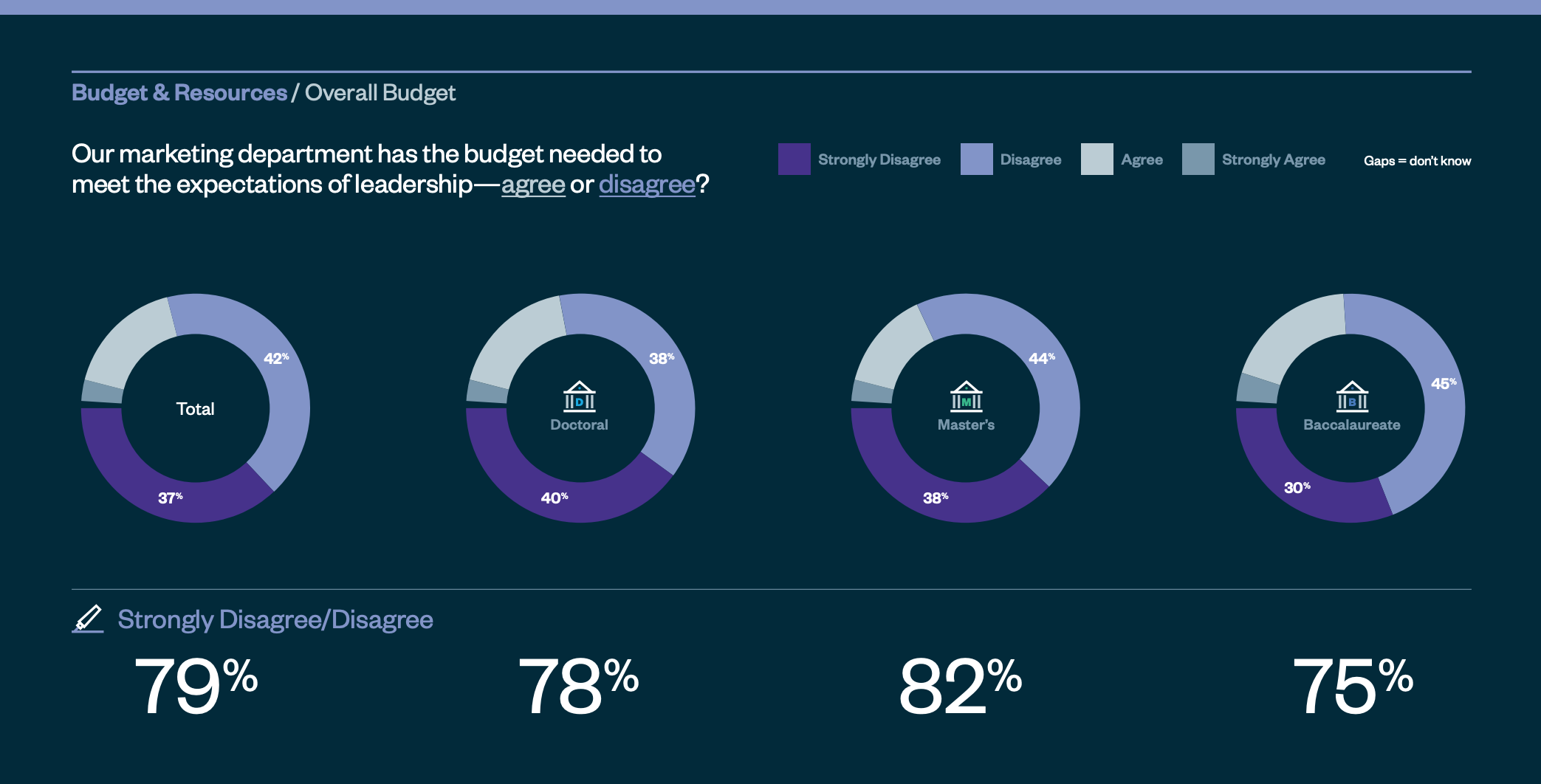
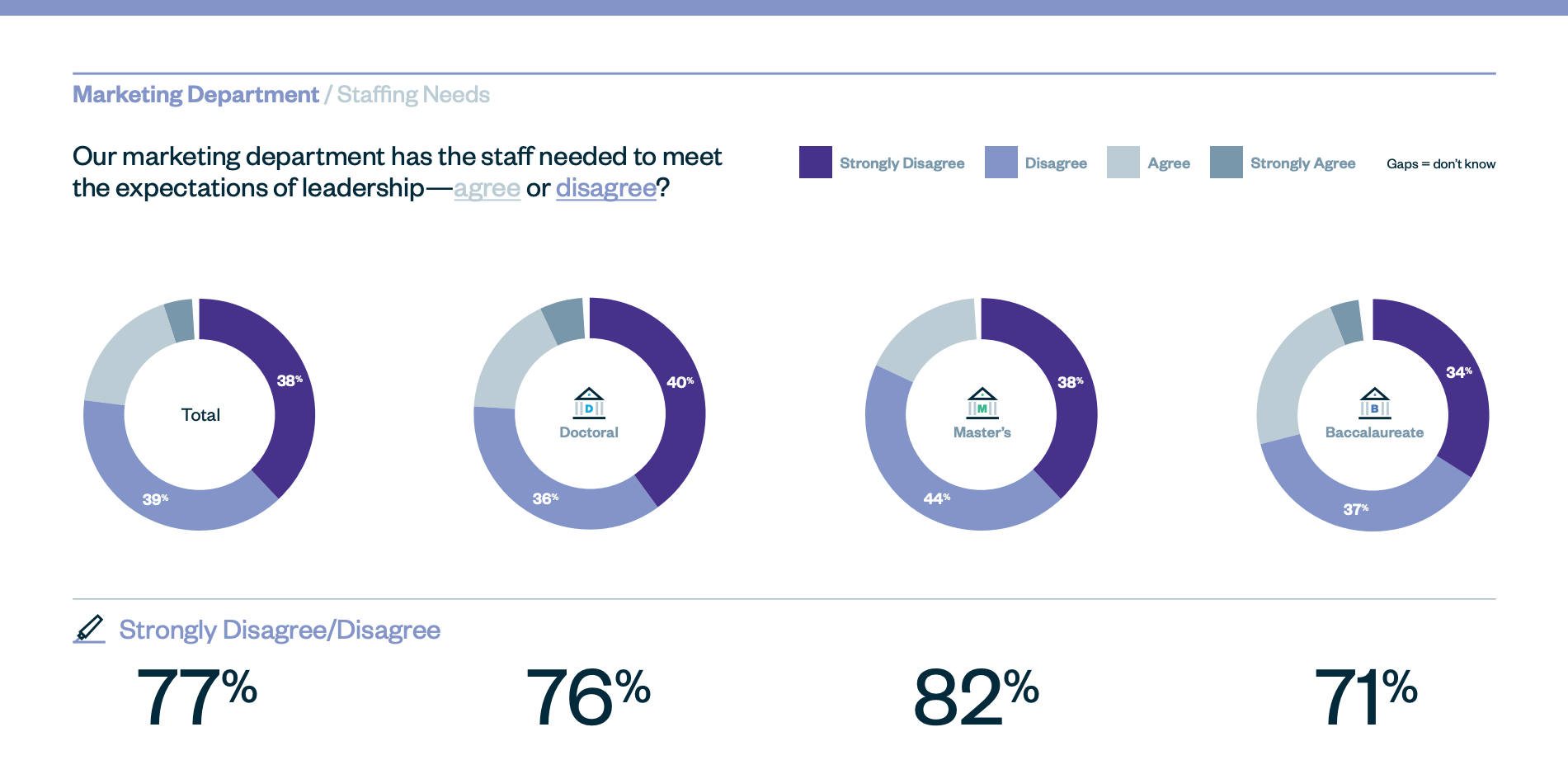
Chief among those challenges of higher ed marketers—as Kin Sejpal points out above—are the constraints of resources. In 2019, we began looking at budgets not only in total but also as a percentage of institutional budgets, similar to how they're assessed in the corporate world (albeit, substantially smaller).
In our 2021-22 CMO Study, CMOs will have the opportunity to better understand this metric across an aggregated peer set of institutions. This is one of the many metrics we're trying to empower CMOs with by developing an interactive portal to see their personal results and how they stack up against their peers. These data can be leveraged to fight for more resources, especially at a time when expectations are skyrocketing.
“The CMO Survey has helped us to benchmark where we stand among peers in advertising budgets, staff salaries, and technologies.
That information has helped us to have strategic conversations across our campus about the value of marketing efforts and investing in our area.”
Carrie Phillips Director of University Marketing & Communications
Arkansas Tech University
Carrie Phillips highlights another critical scope addition to our 2019 Study: better understanding the use of technology and digital strategies on campuses. In fact, when Jason Simon first previewed our findings at the 2019 AMA Symposium for Higher Education Marketing, it was the following two charts about CRM & CMS tools that prompted the majority of CMOs in that room to hold up their cell phones and take a picture.
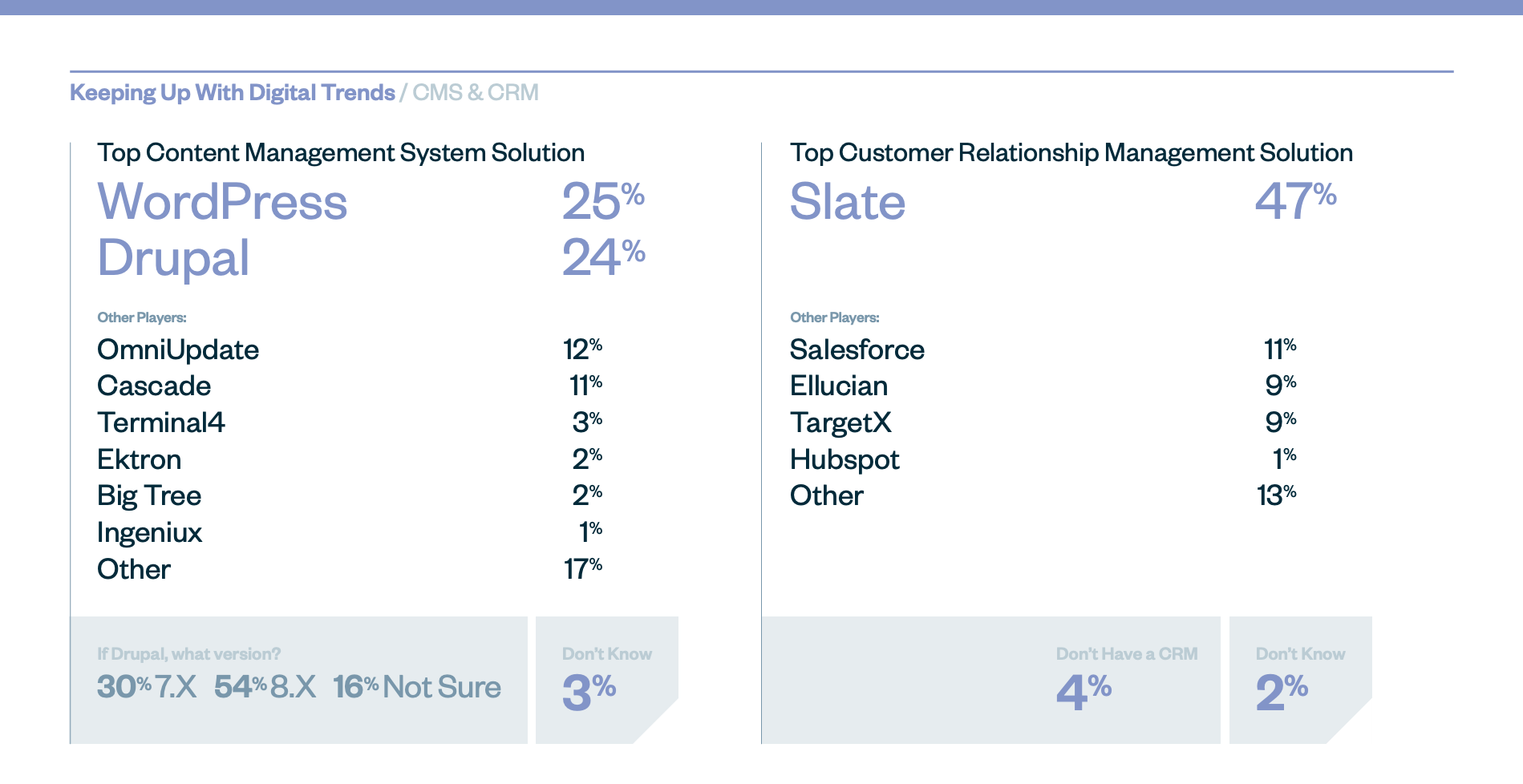
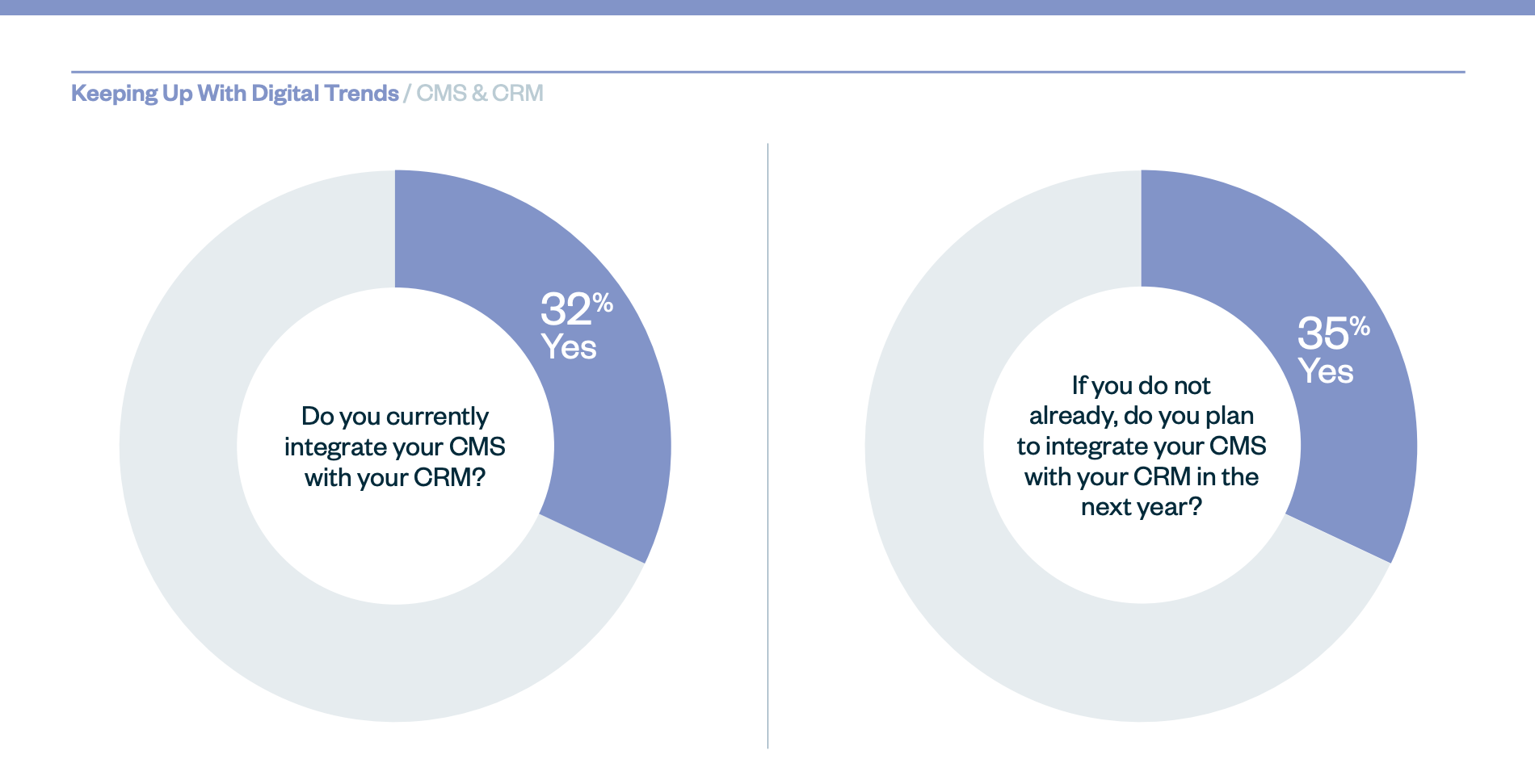 To be frank, there was so much more we wanted to ask this year about website and marketing technology, digital trends, and data strategies, that we launched an additional research study about the State of Higher Education Website & Marketing Technology (that's also currently in data collection). These findings will further augment our CMO Study and provide even greater insight into how other institutions are approaching issues like WebOps, data hygiene, and building their MarTech stacks.
To be frank, there was so much more we wanted to ask this year about website and marketing technology, digital trends, and data strategies, that we launched an additional research study about the State of Higher Education Website & Marketing Technology (that's also currently in data collection). These findings will further augment our CMO Study and provide even greater insight into how other institutions are approaching issues like WebOps, data hygiene, and building their MarTech stacks.
Over the years, the data collected in our CMO Studies have monitored the maturation of the marketing function in higher ed. There's been enormous progress in many areas, and, as we've noted here, other areas have remained stagnant. While not without exception, marketing is no longer a bad word on most campuses (we literally asked that question in our inaugural 2014 study) and institutions have increasingly looked to central marcomm as a strategic partner in achieving institutional goals. On the whole, marketing operations have matured, but expectations have skyrocketed.
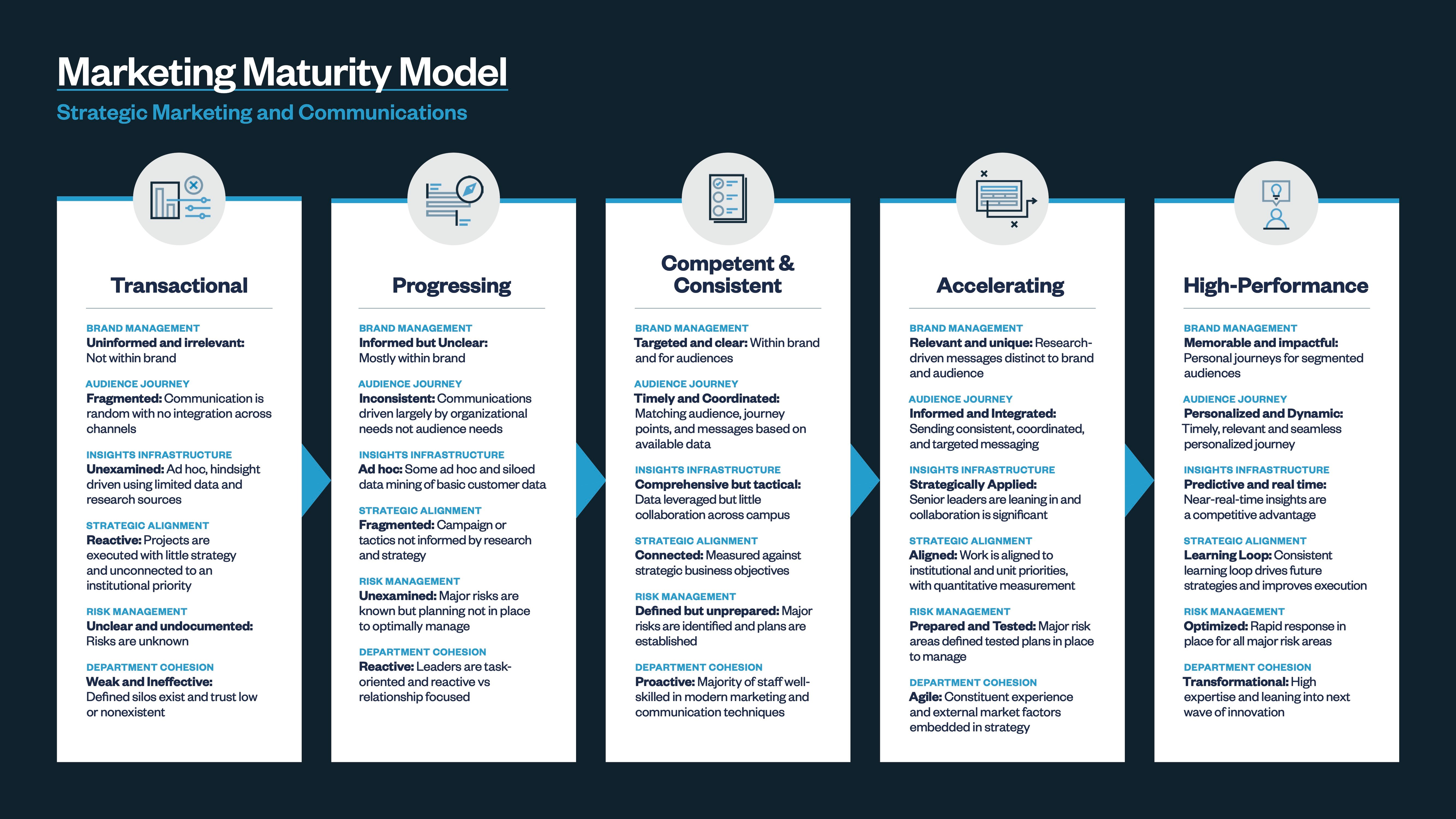 *Adapted from similar models produced by our friends at Salesforce, Indiana University, and Chapman University
*Adapted from similar models produced by our friends at Salesforce, Indiana University, and Chapman University
At SimpsonScarborough, we believe that higher ed changes the world. It disrupts poverty, achieves unimaginable technological breakthroughs, and acts as the primary economic engine in thousands of communities across our country. And we fervently believe that it'll be within the walls of a university where we finally find the cure for cancer. Yet, we also know that public support for higher education and its reputation as a public good is in decline. That's why it's critical, now more than ever, to take seriously the role of marketing in higher education, understand that brand strategy is institutional strategy, and fully empower CMOs with the data they need to not only advance the reputation of their institutions but the institution of higher education as a whole.
If you haven't filled out our survey yet, please sign up or send it to the correct representative at your institution. If you have already participated, send it to five of your industry colleagues. It's in your own best interest to ensure we maximize our sample size to uncover the deepest insights and provide the most actionable data.
Stay tuned later this fall as we preview some of the key findings, and be on the lookout for early next year when we launch the interactive portal for all survey participants. And don't hesitate to reach out if you have any questions regarding this year's CMO Study.
—
Malachi is the Director of Marketing at SimpsonScarborough. An MBA candidate at Georgetown University, he shares our conviction in the transformative power of higher education to eradicate poverty and help solve some of the world's most challenging problems. Outside of work you can find him and his wife chasing around their two little ones, Campbell & Gideon, alongside their two Wheaten Terriers. Learn more about Malachi and the rest of our team here.



